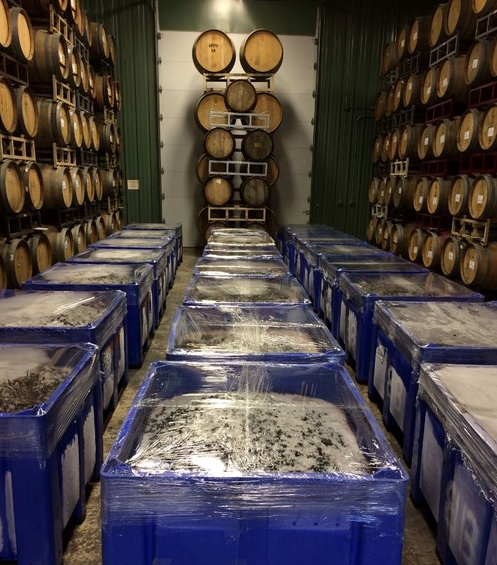Unlocking Freshness: The Art of Cryofermentation in Winemaking

In the ever-evolving world of winemaking, innovative techniques often redefine how we experience wine. One such method gaining traction is cryofermentation, a process that enhances the aromatic profile and freshness of wines by fermenting grape juice at low temperatures. This technique, particularly favored for white and aromatic grape varieties, is transforming the way winemakers craft delightful and expressive wines.
What is Cryofermentation?
Cryofermentation, also known as cold fermentation or cryomaceration, involves fermenting grape juice at temperatures typically between 5-15°C (41-59°F). By slowing down the fermentation process, winemakers can extract and preserve delicate aromas that would otherwise be lost in traditional fermentation methods. This is especially beneficial for varieties like Sauvignon Blanc, Riesling, and Muscat, which thrive under these cooler conditions.
The Cryofermentation Process
- Harvesting and Cooling: The journey begins with the harvest. Once grapes are picked, they are quickly cooled to maintain freshness and prevent oxidation. This can be achieved by placing the grapes in a refrigerated environment or adding dry ice to lower the temperature swiftly.
- Crushing and Pressing: After cooling, the grapes are crushed and pressed to separate the juice from the skins. Since cryofermentation is primarily used for white grapes, the juice spends minimal time in contact with the skins to avoid extracting excessive tannins.
- Cold Fermentation: The juice is transferred to stainless steel tanks and kept at low temperatures during fermentation. Yeasts specifically chosen for cold fermentation are introduced, as they thrive in these cooler environments. The slow fermentation allows for a gradual release of aromatic compounds, leading to wines with heightened flavor complexity.
- Extended Fermentation Period: The cooler temperatures result in a longer fermentation period, sometimes extending over several weeks. This slow process promotes the development of nuanced flavors, yielding wines with intense fruit, floral, and herbal characteristics.
Advantages of Cryofermentation
- Enhanced Aromatics: By fermenting at low temperatures, winemakers capture and preserve volatile aromatic compounds that might evaporate during warmer fermentation, resulting in wines with intensified fruit, floral, and herbaceous notes.
- Freshness and Balance: Wines produced through cryofermentation often exhibit bright acidity and a well-balanced profile, making them refreshing and lively. This technique is particularly effective at retaining the fresh, zesty character of the grapes.
- Control Over Fermentation: Low-temperature fermentation gives winemakers greater control over the pace of fermentation, allowing precise adjustments to flavor, aroma, and structure.
Potential Drawbacks
While cryofermentation offers numerous benefits, it does require specialized equipment and increased energy consumption to maintain the necessary low temperatures. Additionally, not all yeast strains can thrive in cold conditions, necessitating the careful selection of suitable strains for this process.
Popular Cryofermented Wines
Cryofermentation is widely employed in the production of aromatic whites, as well as some rosés and light-bodied reds where freshness and fruit-forward profiles are paramount. Regions known for crisp whites, such as New Zealand, often apply this technique to Sauvignon Blanc, while Germany leverages it to enhance the bright flavors of Riesling.
In conclusion, cryofermentation is a powerful tool that allows winemakers to create wines with enhanced aromas, vibrant acidity, and a clean, refreshing finish. As the appreciation for aromatic and varietally expressive wines continues to grow, this innovative technique is sure to leave a lasting impression on the wine world. So, the next time you pour a glass of wine, consider the journey it took, and appreciate the craftsmanship that brings such delightful flavors to your table. Cheers!
Comments
You know you want to
Sign Up For Our Newsletter
Keep up to date on the latest wine releases, events and promotions.